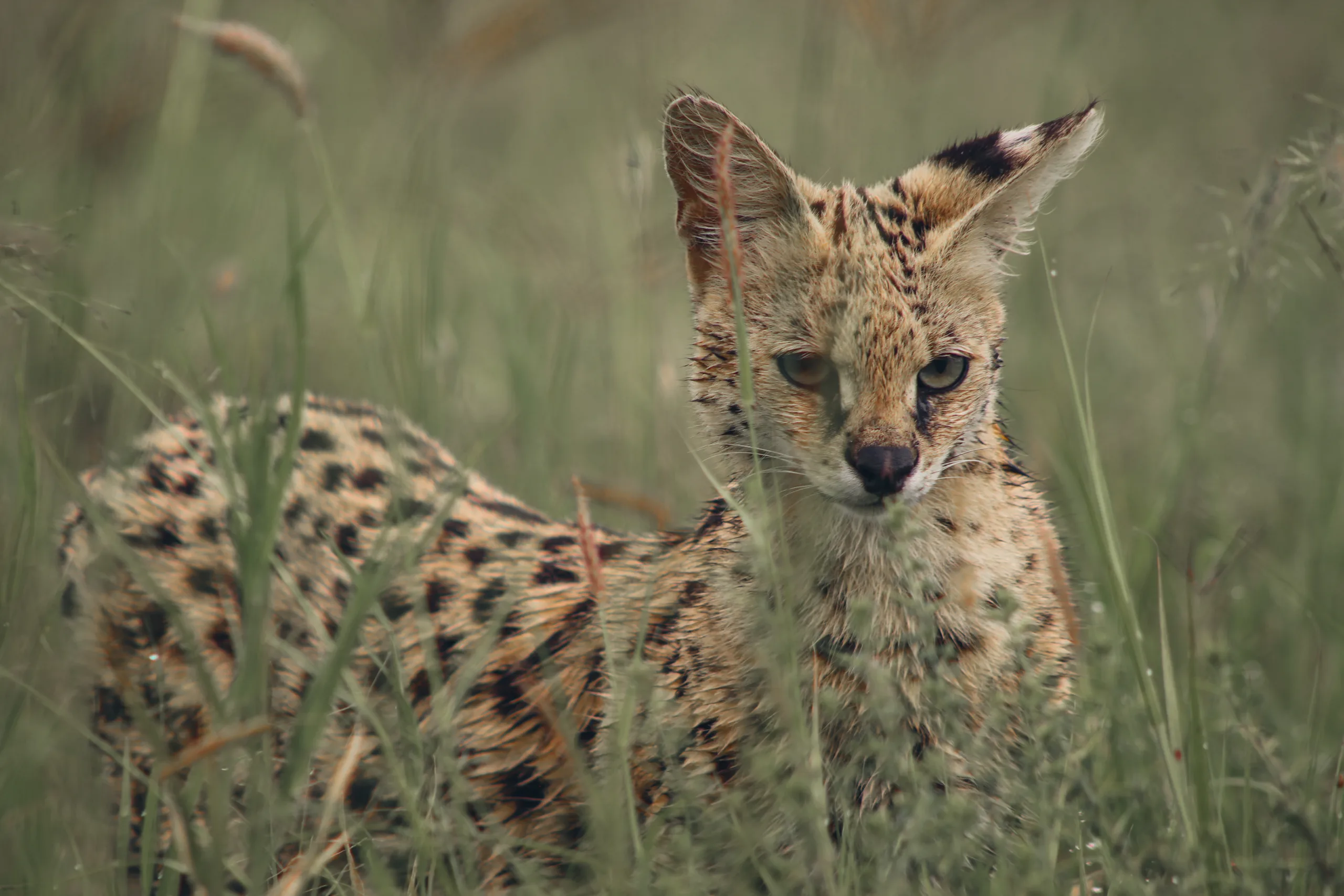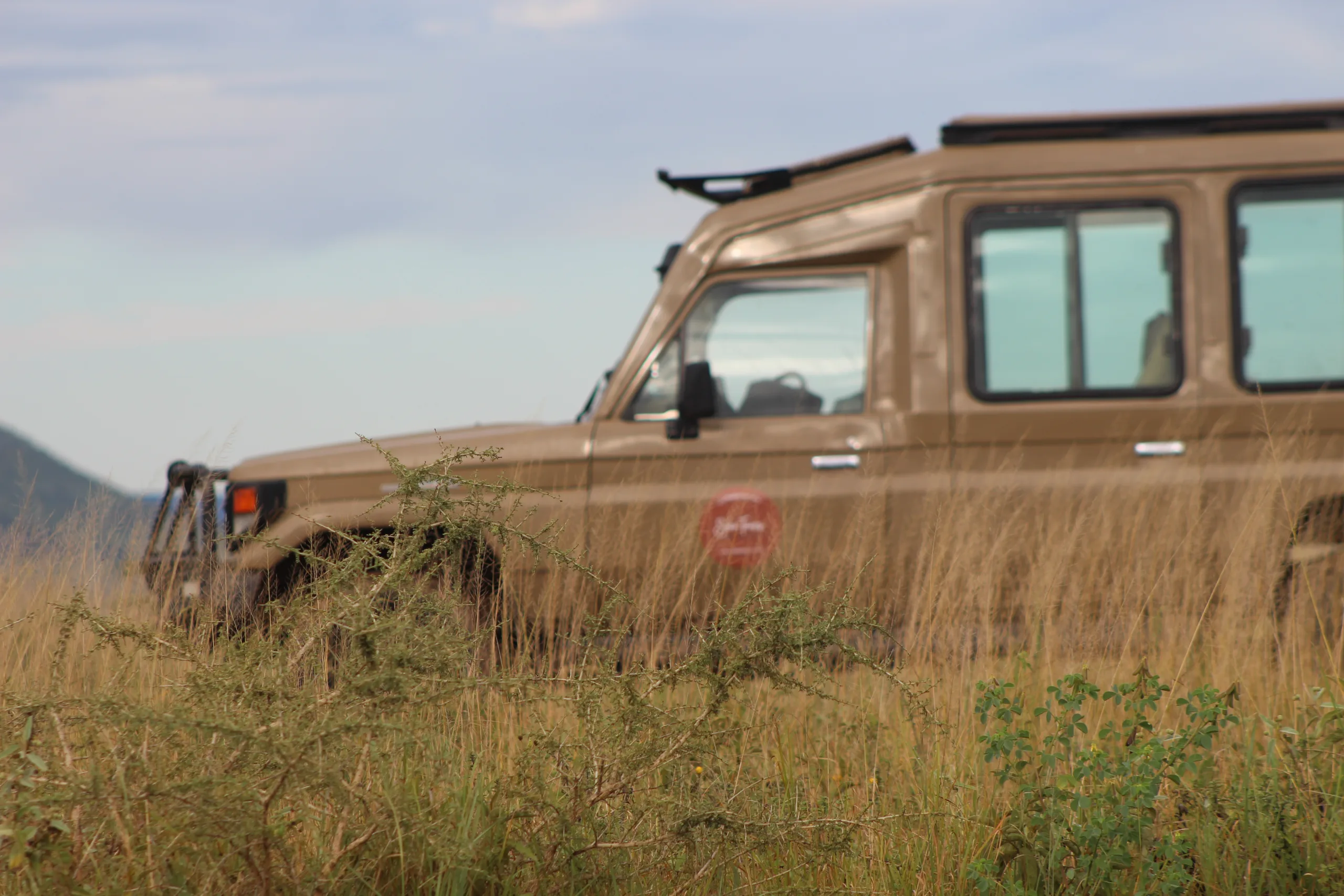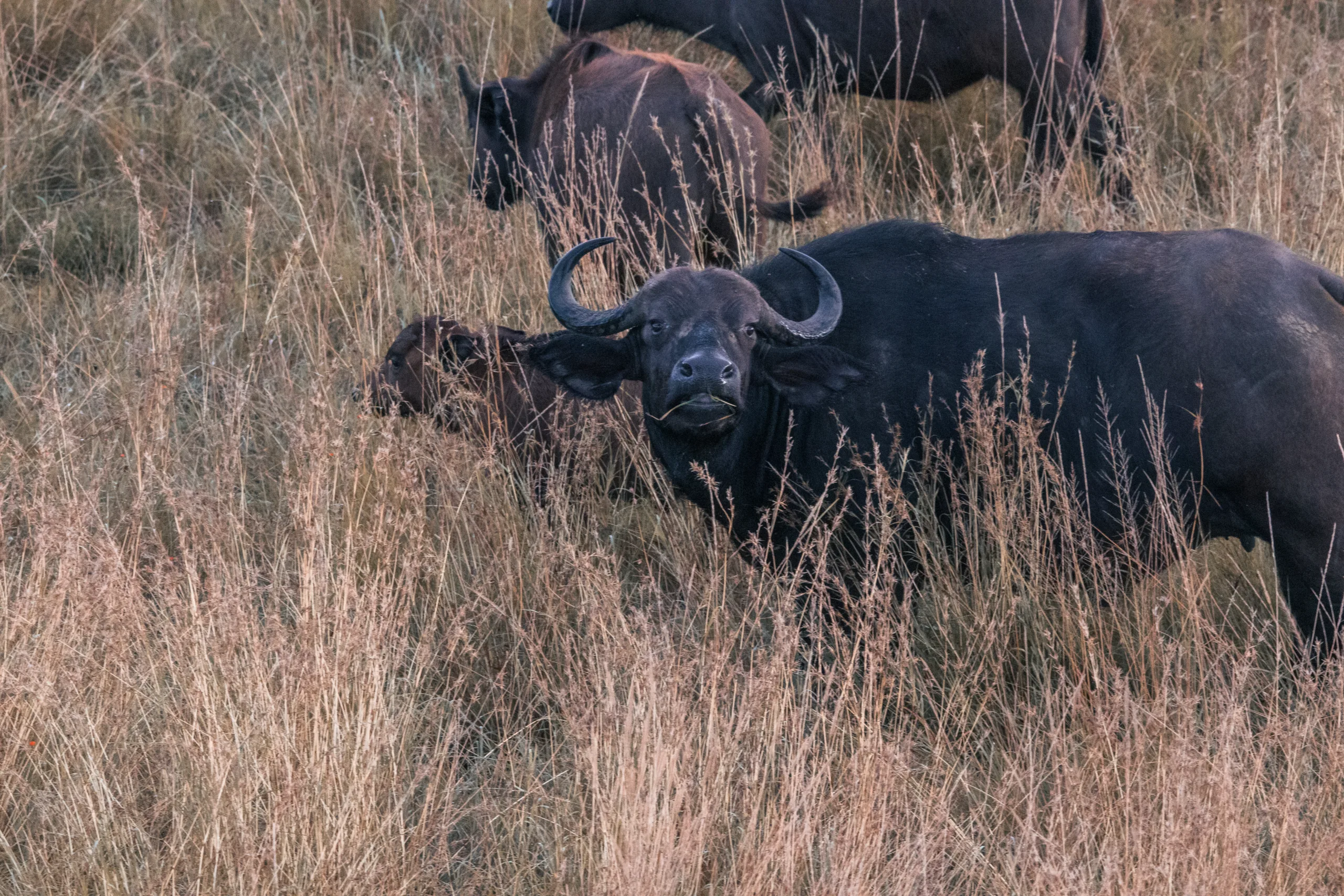If you’re planning a trip to East Africa, understanding the airports in Tanzania is a key part of your travel prep. Whether you’re flying in for a Serengeti safari, relaxing in Zanzibar, or heading to Mount Kilimanjaro, chances are you’ll pass through one of Tanzania’s many international or domestic airports.
Despite being a large and geographically diverse country, Tanzania’s air travel infrastructure is impressively efficient. From major international hubs to small regional airstrips tucked near national parks, each airport plays a specific role in getting travelers where they need to go—safely and on time.
Let’s break down what you need to know before you land.
In this post, you'll find...
ToggleWhy Airports Matter in Tanzania
Tanzania is big—we’re talking about a country nearly twice the size of California. Roads can be rough, distances are long, and national parks like the Serengeti, Ngorongoro Crater, and Ruaha are often hours from the nearest city. That’s why airports are more than just entry points—they’re the backbone of travel here.
Here’s what makes them so important:
✅ Key Takeaways:
- Tanzania has 3 major international airports: Dar es Salaam, Kilimanjaro, and Zanzibar.
- Domestic flights are common and often the fastest way to get between regions.
- Regional airstrips serve national parks and remote lodges, often accessible only by bush planes.
- Air travel is crucial for safaris, island getaways, and saving time.
Types of Airports in Tanzania
Tanzania’s airports fall into three general categories. Understanding the difference can help you plan a more efficient (and often cheaper) itinerary.
1. International Airports
These are large, well-connected airports that handle long-haul and regional flights. They’re equipped with customs and immigration services and are the typical first stop for international visitors.
Top 3 international airports in Tanzania:
- Julius Nyerere International Airport (DAR) – Located in Dar es Salaam. Tanzania’s busiest and largest airport.
- Kilimanjaro International Airport (JRO) – Best for northern Tanzania and safaris (near Arusha and Moshi).
- Abeid Amani Karume International Airport (ZNZ) – Main airport in Zanzibar, perfect for beach vacations.
🧠 Pro Tip: Flying into Kilimanjaro instead of Dar es Salaam can cut travel time if you’re heading straight to safari zones like the Serengeti or Ngorongoro.
2. Domestic Airports
Smaller airports that handle flights between Tanzanian cities. They’re great for avoiding long drives and are often used as jump-off points to more remote regions.
Notable examples:
- Arusha Airport (ARK) – Convenient for safaris starting in Arusha.
- Mwanza Airport (MWZ) – Serves western Tanzania.
- Dodoma Airport (DOD) – Located in the capital city.
🧠 Pro Tip: These airports usually don’t handle international flights, so you’ll need to transfer through DAR, JRO, or ZNZ if arriving from abroad.
3. Airstrips & Bush Airports
Tiny runways, often gravel or dirt, that serve safari lodges and national parks. You’ll fly in via small aircraft, often operated by companies like Coastal Aviation or Auric Air.
Popular for:
- Serengeti National Park (Seronera Airstrip)
- Ruaha National Park
- Selous Game Reserve
- Tarangire and Lake Manyara
🧠 Pro Tip: These flights are scenic but expensive. Pack light—there are strict baggage limits on small planes (usually 15 kg/33 lbs in soft bags).
What to Expect at Tanzanian Airports
Many travelers are surprised at how modern some of Tanzania’s airports are—especially the international ones. That said, prepare for some regional quirks.
✔️ Airport Facilities: What’s Standard?
- Security screening (expect more than one checkpoint)
- Visa on arrival counters for many nationalities
- Currency exchange and ATMs
- SIM card kiosks
- Small shops and snack bars
- Transport options: taxis, shuttles, hotel pickups
🧠 Heads-Up: Not all airports offer free Wi-Fi, and outlets may be limited. Bring a power bank and a downloaded map or itinerary.
Common Routes & Flight Tips
| Route | Best Airport | Airlines |
|---|---|---|
| Serengeti or Ngorongoro | Kilimanjaro (JRO) + Arusha (ARK) | Precision Air, Air Excel |
| Zanzibar | Zanzibar (ZNZ) | Flydubai, Qatar, Coastal Aviation |
| Southern parks (Ruaha, Selous) | Dar es Salaam (DAR) + bush flights | Coastal Aviation |
| Kilimanjaro trekking | Kilimanjaro (JRO) | KLM, Turkish, Ethiopian |
| Lake Victoria region | Mwanza (MWZ) | Air Tanzania |
🧠 Pro Tip: Book domestic flights with local airlines directly or via trusted tour operators. Booking last-minute can be risky during peak season.
Major International Airports in Tanzania
Tanzania has three main international airports that handle the bulk of international traffic. These are your primary entry points if you’re flying in from abroad. Each one serves a different region of the country, so where you land can drastically affect your travel logistics—and your itinerary.
Here’s a breakdown of each major international airport, what they offer, and when to choose them.
1. Julius Nyerere International Airport (DAR)
📍 Location: Dar es Salaam | ✈ IATA Code: DAR
🌍 Region: Eastern Tanzania (Coastal)
Overview:
DAR is the busiest airport in Tanzania and the country’s largest hub. If you’re heading to southern parks like Selous or Ruaha—or planning to connect to Zanzibar by ferry or short flight—this is your gateway. It’s also ideal if your trip includes business in Dar or coastal cities like Bagamoyo.
Facilities & Tips:
- Multiple terminals (Terminal 3 is for international flights)
- Visa on arrival and immigration processing
- Cafés, currency exchange, ATMs, SIM cards
- Airport taxis and hotel shuttles available
When to Fly Into DAR:
- You’re heading to Zanzibar, Southern Tanzania, or Dar es Salaam itself
- You’re connecting to regional flights or Coastal Aviation bush flights
🧠 Local Tip: Traffic in Dar can be unpredictable. Leave at least 3–4 hours for transfers between the airport and the city.
2. Kilimanjaro International Airport (JRO)
📍 Location: Between Arusha & Moshi | ✈ IATA Code: JRO
🌍 Region: Northern Tanzania (Safari Circuit + Kilimanjaro)
Overview:
If your trip is centered around the northern safari circuit—Serengeti, Ngorongoro, Tarangire, or Lake Manyara—this is the airport you want. It’s also the closest gateway for those trekking Mount Kilimanjaro.
Facilities & Tips:
- Smaller and more manageable than DAR
- Onsite visa-on-arrival desks
- Coffee shops, currency exchange, and mobile kiosks
- Arusha and Moshi transfers take about 1–1.5 hours by car
When to Fly Into JRO:
- You’re doing a safari in northern Tanzania
- You’re climbing Mount Kilimanjaro
- You’re flying to a lodge via Arusha Airport (ARK) or bush strip
🧠 Local Tip: The airport is clean and safe but doesn’t offer much in terms of food. Bring snacks if you’re arriving late.
3. Abeid Amani Karume International Airport (ZNZ)
📍 Location: Zanzibar (Unguja Island) | ✈ IATA Code: ZNZ
🌍 Region: Zanzibar Archipelago
Overview:
Formerly known as Kisauni Airport, ZNZ is your island entry point. It’s located just south of Stone Town and services a mix of international flights from the Middle East and Europe, as well as frequent domestic flights from Dar, Arusha, and Kilimanjaro.
Facilities & Tips:
- Recently upgraded terminal for international flights
- Airport taxis and hotel transfers readily available
- SIM cards, ATMs, small shops in terminal
When to Fly Into ZNZ:
- You’re starting your trip on the beaches of Zanzibar
- You’re coming from Nairobi, Doha, Dubai, or Dar es Salaam
🧠 Local Tip: Some budget airlines have strict baggage policies—double-check weight limits and fees before flying to ZNZ.
Summary Table: Tanzania’s International Airports
| Airport | Code | Best For | Nearby Cities |
|---|---|---|---|
| Julius Nyerere (Dar es Salaam) | DAR | Southern parks, Zanzibar, Dar | Dar es Salaam |
| Kilimanjaro | JRO | Northern safari circuit, Kilimanjaro climbs | Arusha, Moshi |
| Zanzibar | ZNZ | Beach holidays, direct international access | Stone Town, Paje |
🔑 Key Takeaways
- Choose your entry airport based on your destination: northern parks = JRO, southern parks = DAR, beaches = ZNZ.
- You’ll likely need a domestic connection or ground transport from any of these airports to reach national parks or lodges.
- All three airports offer visa on arrival, but applying in advance can save time in queues.
- Terminal services are decent but limited—especially in off-hours. Be self-sufficient.
Key Domestic Airports in Tanzania
Once you’ve landed at one of Tanzania’s international airports, the next leg of your journey might involve a domestic flight—especially if you’re heading to the more remote corners of the country. These domestic airports in Tanzania serve as essential hubs for connecting travelers to national parks, cities, and coastal areas that aren’t easily accessible by road.
Here’s a breakdown of the most important domestic airports and what each one is best for.
1. Arusha Airport (ARK)
📍 Location: Arusha City
🌍 Region: Northern Tanzania
Overview:
Not to be confused with Kilimanjaro International Airport (JRO), Arusha Airport handles most of the domestic safari traffic in northern Tanzania. If you’re continuing on to the Serengeti or Ngorongoro by bush plane, this is where you’ll catch your flight.
Why It Matters:
- Common transfer point after arriving at JRO
- Serves as the gateway to Seronera, Lake Manyara, Tarangire, and more
- Frequent flights operated by Coastal Aviation, Air Excel, and Regional Air
🧠 Pro Tip: It’s a very small airport—check-in is fast, but bring cash and snacks as amenities are limited.
2. Mwanza Airport (MWZ)
📍 Location: Mwanza, on Lake Victoria
🌍 Region: Northwestern Tanzania
Overview:
This is the main airport for the Lake Victoria region. It’s useful if you’re planning to explore western Tanzania or need access to less-touristy parts of the Serengeti.
Why It Matters:
- Connects to Dar, Kilimanjaro, and other cities
- Sometimes used for less crowded access to the western Serengeti
- Growing in popularity for business and regional travelers
🧠 Pro Tip: Mwanza is a great launchpad for combining safaris with a cultural or lakefront experience.
3. Dodoma Airport (DOD)
📍 Location: Dodoma (Tanzania’s capital)
🌍 Region: Central Tanzania
Overview:
Dodoma is the political capital of Tanzania. While it’s not a major tourist destination, it’s an important stop for government travel or if you’re exploring the central highlands.
Why It Matters:
- Flights mostly from Dar and Mwanza
- Basic terminal with limited services
- Often used for local NGO and business operations
🧠 Pro Tip: There’s not much tourist infrastructure in Dodoma, so book accommodation and transport in advance.
4. Songwe Airport (MBI)
📍 Location: Near Mbeya, Southern Highlands
🌍 Region: Southwestern Tanzania
Overview:
Songwe Airport is important for access to the Southern Highlands, including hiking areas and tea plantations near Mbeya. It’s also occasionally used by safari operators heading toward Ruaha.
Why It Matters:
- Connects with Dar and sometimes Zanzibar
- Used for off-the-beaten-path itineraries in southern Tanzania
- Important hub for eco-tourism and agriculture
5. Pemba Airport (PMA) & Mtwara Airport (MYW)
📍 Location: Pemba Island & Mtwara
🌍 Region: Zanzibar Archipelago & Southern Coast
Overview:
- Pemba Airport (PMA): For travelers heading to Pemba Island, known for diving and unspoiled beaches
- Mtwara Airport (MYW): Serves the southern coastline, a quiet alternative to Zanzibar
🧠 Pro Tip: Pemba flights are limited—book early and confirm with local operators.
🔍 Other Regional Airports to Know
| Airport | Region | Best For |
|---|---|---|
| Tabora (TBO) | Central Tanzania | Business travel, regional access |
| Kigoma (TKQ) | Western Tanzania | Lake Tanganyika, Gombe Stream |
| Bukoba (BKZ) | Lake Victoria | Cultural tourism, fishing trips |
| Mafia Island (MFA) | Indian Ocean | Marine parks, scuba diving |
Why Domestic Flights Are Worth It
Domestic flights in Tanzania are a huge time-saver. Roads can be rough, especially during the wet season, and some national parks are 8–12 hours by car from the nearest city.
Here are the main pros and cons:
✅ Pros:
- Save hours (or days) of travel time
- Access remote areas like the Serengeti and Ruaha
- Scenic views during flights
- Often included in safari packages
❌ Cons:
- Limited luggage (usually 15 kg/33 lbs in soft bags)
- Can be expensive compared to road transfers
- Delays are not uncommon
🧠 Local Tip: Always reconfirm your flight the day before, especially with smaller airlines. Schedules may change depending on weather or aircraft availability.
Airstrips and Bush Flights in Tanzania
Some of the most iconic experiences in Tanzania—watching the Great Migration in the Serengeti, tracking lions in Ruaha, or hearing hippos grunt by your tent in Selous—happen far from the main roads. To reach these places efficiently, you’ll need to fly into bush airstrips, which are small, unpaved runways located inside or near national parks.
These airstrips in Tanzania aren’t like your typical airport. There’s no terminal, no baggage carousel, and sometimes not even a building. Just a dirt strip, a windsock, and maybe a safari vehicle waiting nearby. But what they lack in luxury, they make up for in convenience and adventure.
What Are Bush Airstrips?
Bush airstrips are small landing areas used by light aircraft—usually Cessna Caravans or similar safari planes. They’re often operated by tour companies or local aviation services and serve safari lodges, tented camps, and remote research stations.
They’re vital for:
- Cutting travel time in half (or more)
- Accessing remote game parks with limited or no road access
- Offering scenic flights across dramatic landscapes
Most Popular Airstrips in Tanzania
| Airstrip | Location | Best For |
|---|---|---|
| Seronera Airstrip | Central Serengeti | Central safari hub, most traffic in the park |
| Kogatende Airstrip | Northern Serengeti | Great Migration (July–October), Mara River area |
| Lobo Airstrip | Northeast Serengeti | Quiet area, off-the-beaten-path camps |
| Ndutu Airstrip | Southern Serengeti/NCA | Calving season (December–March) |
| Manyara Airstrip | Near Lake Manyara NP | Fast access to Manyara, Ngorongoro, and Tarangire |
| Selous/Mtemere | Nyerere National Park (Selous) | River safaris, fly-in luxury camps |
| Ruaha Msembe | Ruaha National Park | Remote safari camps, hiking |
🧠 Pro Tip: Safari airstrips are often just 15–30 minutes by vehicle from your lodge. Most camps will coordinate pick-up and drop-off for free.
Who Flies There?
Several local airlines specialize in bush flights in Tanzania, offering scheduled services and private charters:
- Coastal Aviation – Most popular, extensive safari circuit coverage
- Auric Air – Reliable, good safety record
- Air Excel – Arusha-based, offers both charters and daily scheduled routes
- Regional Air Services – Also a solid option for safari connections
These companies often follow circuit routes, where one plane makes multiple stops in one trip. Your flight might make 2–3 landings before reaching your final destination.
What to Expect When Flying to a Bush Airstrip
- Weight Limits: Usually 15 kg (33 lbs), including carry-on, and bags must be soft-sided
- No Security: There are no scanners or boarding gates—just a check-in desk and a handshake
- Flexible Schedules: Departure times are more like guidelines; always reconfirm the day before
- Incredible Views: These flights offer stunning aerial views of savannahs, rivers, and herds of animals below
🧠 Local Tip: Bring binoculars in your carry-on—some travelers spot elephants or giraffes before they even land!
Bush Flights vs. Road Transfers
| Factor | Bush Flight 🛩️ | Road Transfer 🚙 |
|---|---|---|
| Time | 1–2 hours max | 6–12 hours (or more) |
| Comfort | Limited (tight seats, no AC) | Bumpy roads, but more flexible stops |
| Cost | $$$ (often $200–$400+ per leg) | $$ (generally cheaper) |
| Experience | Scenic, thrilling | Great for seeing local villages |
📌 Key Takeaways
- Bush airstrips in Tanzania are the quickest way to reach national parks and remote safari lodges
- You’ll likely use a safari-specific airline like Coastal Aviation or Auric Air
- Luggage limits are strict—soft bags only, with a maximum of 15 kg
- These flights aren’t just transportation—they’re part of the safari experience
- Most lodges offer free airport pickup directly from the airstrip
🙋 Frequently Asked Questions (FAQ)
Q: What are the main international airports in Tanzania?
A: Julius Nyerere (DAR), Kilimanjaro (JRO), and Zanzibar (ZNZ) are the main international airports. Most travelers arrive through one of these.
Q: What airport should I use for Serengeti or Ngorongoro?
A: Fly into Kilimanjaro International Airport (JRO), then transfer to Arusha or take a bush flight to a park airstrip.
Q: Can I fly directly to Zanzibar?
A: Yes. Zanzibar Airport (ZNZ) has direct international flights and daily domestic routes from Dar and Arusha.
Q: Are domestic flights in Tanzania reliable?
A: Generally yes, but delays are not uncommon. Stick to well-reviewed airlines like Precision Air or Coastal Aviation.
Q: Do I need a visa on arrival at Tanzanian airports?
A: Most nationalities can get a visa on arrival, but it’s faster to apply online beforehand via Tanzania’s eVisa portal.








